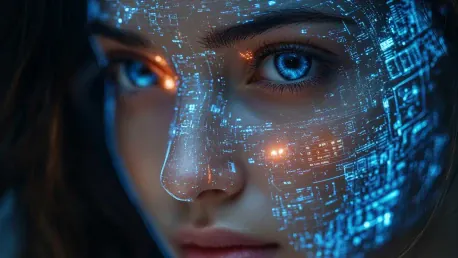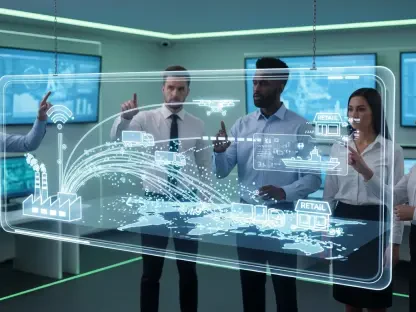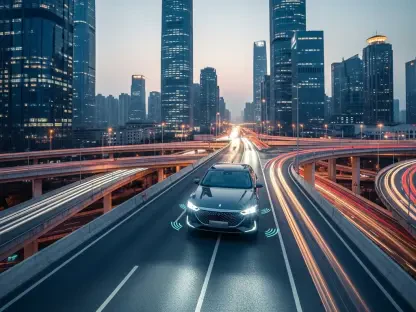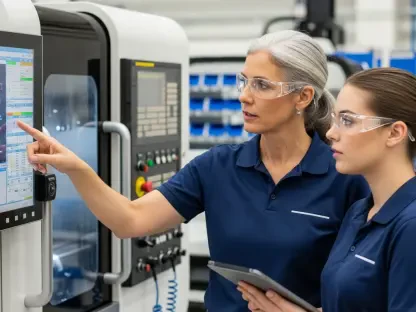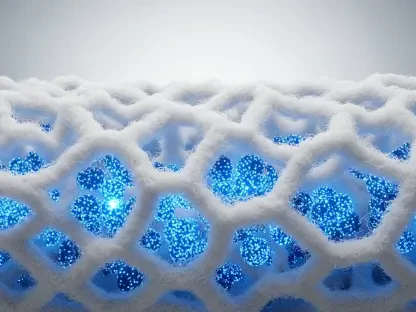The integration of real-time, high-resolution stereo vision technology in industrial robotics has transformed how robots perceive and interact with their environment. This technology, by significantly enhancing depth perception and 3D mapping capabilities, is poised to revolutionize various industrial applications. This market analysis delves into the current trends, technical challenges, potential solutions, and future projections for high-resolution stereo vision in robotics.
Context and Importance
Industrial robotics has seen exponential growth owing to advancements in vision technology. The ability of robots to generate precise 3D maps and perceive depth in real time is critical for tasks requiring high precision and efficiency. This analysis aims to explore how real-time, high-resolution stereo vision is shaping the robotics market, addressing essential technical hurdles, and identifying emerging trends and projections.
Market Trends and Technical Challenges
Processing Power Demands
One of the significant challenges in adopting real-time, high-resolution stereo vision involves the substantial processing power needed for accurate depth perception. High-resolution images require significant computational resources to generate disparity maps, which are essential for stereo vision. To tackle this, the industry is focusing on algorithm optimization and hardware acceleration strategies. Efficient algorithms such as semi-global matching and deep learning-based methods have been developed to reduce computational overhead and enhance depth estimation.
Speed and Real-Time Reactions
For industrial robots to operate effectively, they must process visual data and calculate depth instantaneously. Delays in processing not only lead to inefficiencies but can also pose safety risks in fast-paced industrial environments. To mitigate these issues, techniques like parallel processing with GPUs and employing FPGAs for specialized tasks are gaining traction. These techniques enable robots to handle multiple calculations simultaneously, ensuring swift and accurate real-time responses.
Environmental Challenges
Variable lighting conditions, shadows, reflections, and the presence of shiny or clear objects pose substantial obstacles to accurate depth perception. These factors can distort the ability of stereo vision systems to generate precise disparity maps. High dynamic range (HDR) cameras and advanced noise reduction techniques like bilateral and median filters are being utilized to address these challenges. Additionally, deep learning solutions have shown promise in efficiently enhancing images and reducing noise, although they require clean data and significant computing power.
Embedded System Constraints and Mitigations
Limited Computational Power
Many industrial robots operate with smaller embedded computers that have limited processing capabilities. Integrating high-resolution stereo vision within these constraints requires innovative solutions. Specialized hardware, such as stereo cameras with onboard processing capabilities and FPGA-based devices like the Bumblebee X, are helping to alleviate the computational burden. These devices handle complex stereo matching directly on the device, freeing up resources for other critical tasks such as AI-driven decision-making.
Hardware Acceleration Strategies
Hardware acceleration is becoming increasingly important for implementing high-resolution stereo vision in embedded systems. FPGA-based devices offer customization and efficiency, managing specific tasks independently from the main processor. By offloading heavy stereo matching tasks to onboard processing units, overall system performance is significantly enhanced, allowing for more efficient depth estimation and real-time reactions. This strategy is crucial for maintaining operational efficiency in industrial settings with embedded system constraints.
Maintaining Calibration Stability
Preventing Calibration Drift
Calibration drift, caused by mechanical stress, vibrations, temperature variations, and environmental factors, can degrade stereo vision systems’ accuracy. Maintaining calibration stability is paramount for ensuring accurate depth perception over time. Techniques such as using rigid camera housings made from thermally stable materials and implementing shock-absorbing mounts are proving effective in minimizing these risks.
Long-Term Calibration Practices
Regular verification and recalibration are essential for maintaining the accuracy of stereo vision systems, especially in harsh industrial environments. Cameras designed for optimal calibration stability, like the Bumblebee X, are minimizing the need for frequent recalibration. This approach not only maximizes productivity but also reduces downtime, ensuring that industrial robots can operate with high precision consistently.
Future Projections and Strategic Insights
Enhancing Autonomous Navigation
The advancements in stereo vision technology are expected to significantly improve autonomous navigation capabilities in industrial robotics. Accurate depth perception enables robots to make precise distance judgments and navigate efficiently, avoiding collisions. This enhancement is crucial for safety and operational success, especially in environments where robots must interact closely with humans and other machinery.
Improving Pick-and-Place Tasks
High-resolution stereo vision is revolutionizing pick-and-place applications by allowing robots to identify and grasp objects reliably. Ensuring stable calibration is essential for maintaining productivity and accuracy in these tasks. The improved perception from stereo vision technology enables industrial robots to stack pallets accurately and safely, mitigating risks posed by misalignment and ensuring stable work conditions.
Conclusion
The adoption of real-time, high-resolution stereo vision in industrial robotics has been transformative, addressing substantial technical challenges through advanced algorithms and specialized hardware solutions. By optimizing software, utilizing hardware acceleration, and implementing comprehensive strategies for environmental variations and calibration stability, manufacturers have advanced robotics technology significantly.
The continuous development of stereo vision systems has not only solved immediate technical challenges but also contributed to the broader goal of creating smarter, more responsive, and autonomous robotic systems. These advancements have enhanced precision, reliability, and efficiency in industrial applications. The insights gained from the market trends and projections provide a roadmap for future innovations and strategic implementations in the field of industrial robotics.
